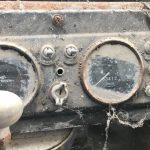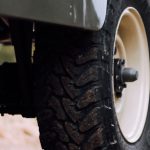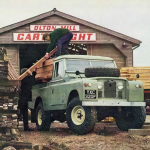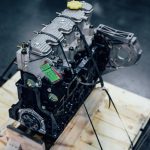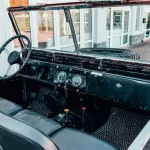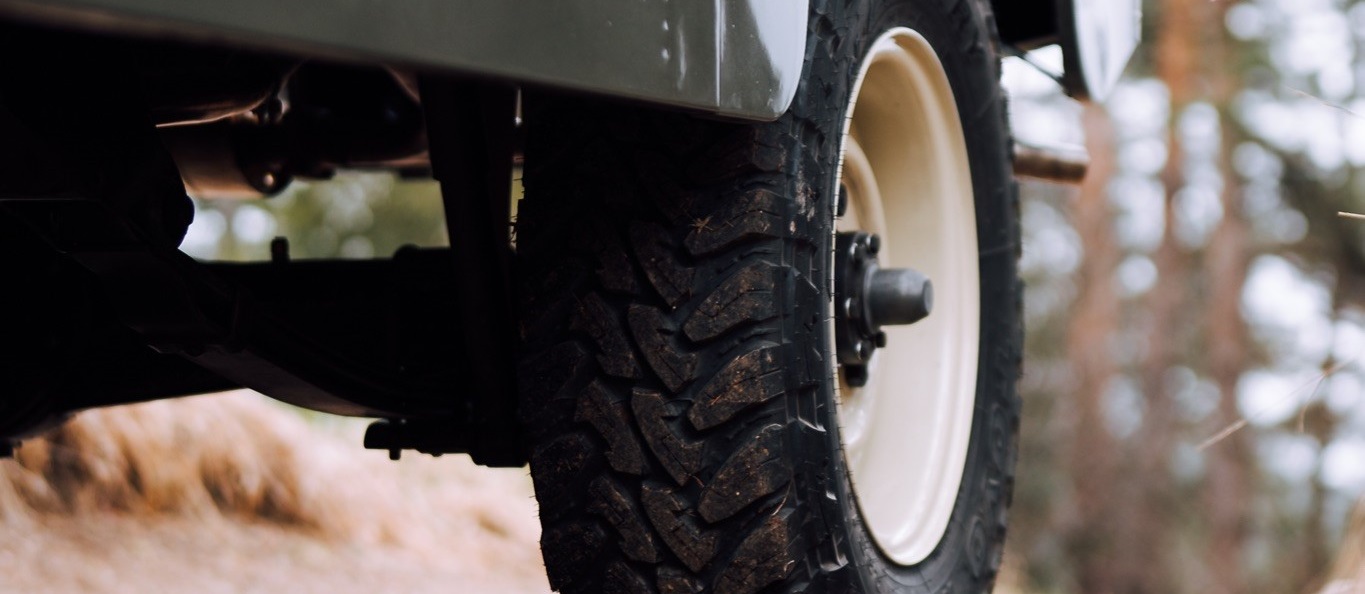
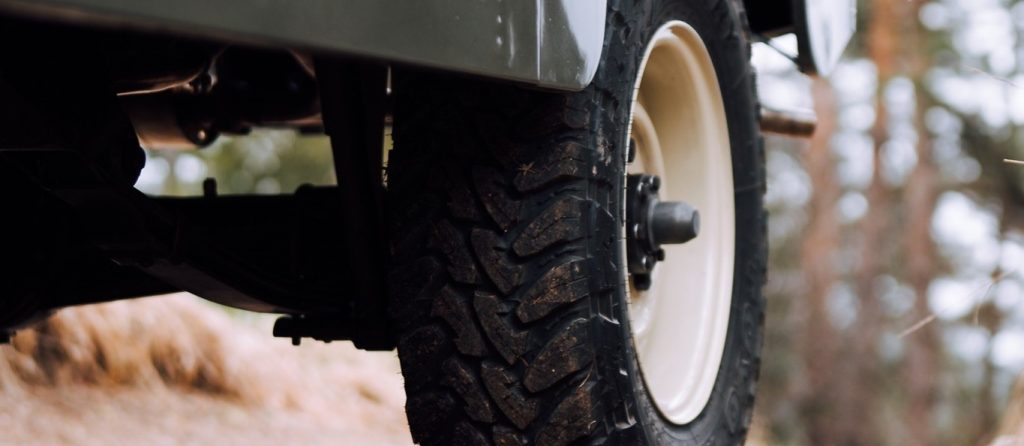
Land Rover Steel Wheels
Will they fit? Will they rub? Let’s have a closer look.
Land Rover wheels are a topic of many discussions on the Internet, and most commonly the wheel is the first thing a new Land Rover owner wants to change on his newly purchased second-hand vehicle. After all, wheels make a car. So let’s dig deeper into the choice of genuine Land Rover steelies. The most common questions regarding a wheel are in the sense of “will they fit?” or “will they rub?”
Land Rover steel wheels haven’t changed much since the very first Land Rover. For a newbie, they are all the same. In the following few lines you’ll find out how to spot the differences. The basic characteristics we are going to compare are width, offset and diameter. You’ll also find out about a couple of special purpose steel rims. After reading this article, you’ll never look at the steel wheel the same way again, and perhaps you’ll find a way to appreciate the true hard-core look of a steelie.
The Wheel Radius
The first Land Rover wheel had a 16″ diameter and remained the same from 1948 to the end of production in 2016. Land Rover made an exception for the American market (NADA – North Atlantic Dollar Area) and equipped trucks with a 15″ wheel rim, as 16″ tyres were hard to source in America in the 1960s.
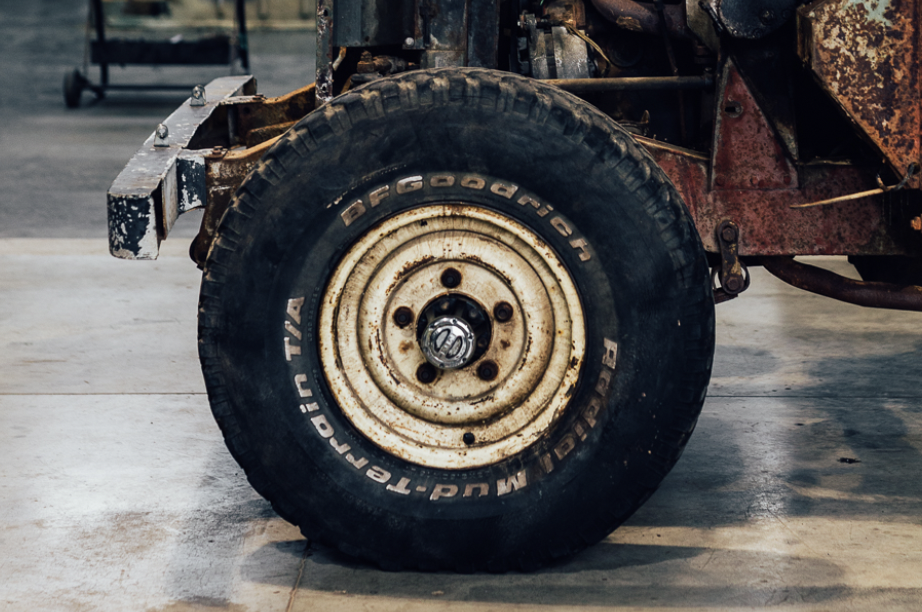
The Wheel Offset
The offset of the wheel (the distance from the centre to the mounting face) is an important measure,
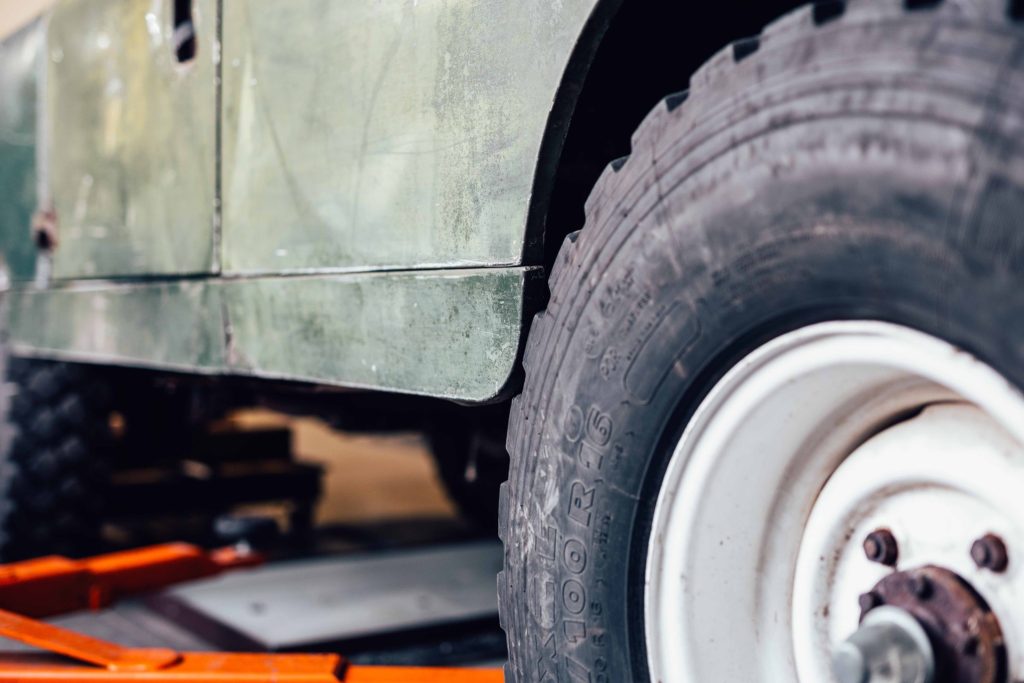
as it determines the drive characteristics and looks of the Landy. In general, the larger the tyre, the smaller the offset you need to maintain the steering radius and maneuverability. What happens is that the negative offset will push the wheel further from the frame, meaning there is more space for the tyre in full lock. Land Rover has generally kept higher offsets for Long Wheel Base (LWB) models to improve the steering radius and accommodate the larger 7.5-inch tyre. The wheel offset will also very much characterize the appearance of the Land Rover. A negative offset will make the Land Rover look more chunky, whereas a positive offset will get you a more conservative, subtle look. Simply said – the lower the offset number, the more the wheel will stick out.
The Width
The width of the rim has changed over time. The first rims were only 5″ wide and they have been used on the majority of the short wheel-base Land Rover series throughout their entire production. Narrow wheels were ideal for light trucks. Heavier long wheel-base vehicles were equipped with slightly wider 5.5″ rims which would fit the 7.50–16″ tyres to gain more traction on an unstable surface. Wider 6″ rims

were mounted on American NADA Land Rovers, again due to the lack of availability of narrow tyres. The heaviest of all Land Rovers were equipped with wide 6.5″ rims which could adapt to a tyre as large as 9.00–16″. Wide rims were used on all heavy duty military Land Rovers, the 1-ton Land Rover, all Forward Control models and the 130. Also, specially equipped Land Rovers, like the NAS (North Atlantic Special) Defender 110, which came with a factory roll-cage, and Camel Trophy Defenders were also riding on wide 6.5″ rims to adapt for the additional weight. The general rule is the heavier the Land Rover, the wider the rim.
Special Purpose Rims
Apart from the most typical steel rim, in 1994 Land Rover introduced a special heavy duty wheel part number ANR4635. More notoriously, it is known as the “wolf” rim, as it was used on a special military Land Rover called the Wolf. Wolf rims are made from thicker material to withstand heavy usage. Additionally, the wolf rim has holes in the outer radius to make the mounting of the Land Rover easier during lifting and transport.

Another special category of wheels is the detachable rims, also called split rims. The purpose of a split rim is that you can divide the rim in two halves to make the tyre or tube swap convenient in a field

setup. A split rim was standard on all military Land Rovers up to the late 1960s and has been optional on civilian Land Rovers since the first Series.
Will They Fit?
To answer the crucial question of will they fit, you need to look at the type of Land Rover you drive. Generally, all Land Rovers will fit a 7.50–16″ tyre or the modern 235/85 R16 equivalent, which is the 31 and 31.7″ tyre. Larger tyres, like the 9.00–16″ which are 34″ tall, can be fitted easily onto vehicles with higher ground clearance (e.g. the military 109 Series, the 1-ton, the FC or modified Defenders). To maintain the steering radius, larger tyres should be accompanied by a larger offset rim. These are general recommendations, but feel free to experiment with the wheels and find the right size for your Landy.
Complete Comparison
| FITMENT | PART NUMBER | DIAMETER | WIDTH | OFFSET |
| 88″ Except America | 231601 | 16″ | 5″ | 25.4 mm |
| 109″ up to 1968 optional on 88″ | 272309 | 16″ | 5.5″ | 46 mm |
| 109″ from 1969 | 569690, 568966, | 16″ | 5.5″ | 33 mm |
| 90 and 110 | NRC7578, ANR4636 | 16″ | 5.5″ | 50.8 mm |
| NADA 88″ and 109″ | 526753 | 15″ | 6″ | 25.4 mm |
| Detachable rim, also called a “Split rim” | 217267 | 16″ | 5.5″ | 33 mm |
| Land Rover 130 utility, Military Land Rovers, Camel Trophy, 1-ton, NAS Defender 110 | 569204, ANR1534 | 16″ | 6.5″ | 20.6 mm |
| Defender 110 utility, Defender 130, Military Land Rovers, | ANR5593 ANR4583 “Wolf” | 16″ | 6.5″ | 20.6 mm |
| 1-TON, Forward Control 2b | 569203 | 16″ | 6.5″ | -1 mm |
| 101 Forward Control | NRC130 | 16″ | 6.5″ |
This article was created thanks to the large stock of wheels at Heyus, old Land Rover brochures and parts catalogs, even though it is missing a few perks, like the huge steel wheels of the Forest Rover and the 16″ split-rim used on a very early Series 1. If you have information on these wheels, we would greatly appreciate your help.
Other sources include
By Vladimir Stec, owner at Heyus

